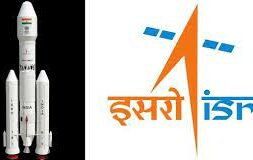
NEW DELHI, Apr 22: Indian Space Research Organisations (ISRO) Polar Satellite Launch Vehicle C55 (PSLV C55) carrying Singapore’s TeLEOS-2 as the primary satellite and Lumelite-4 as a co-passenger satellite took off from the Satish Dhawan Space Centre, Sriharikota, at 14.19 hours on Saturday and placed them into the intended orbit.
“Congratulations PSLV and NSIL for this successful launch,” said ISRO Chairperson S. Somnath, while adding that there are “interesting things” lined up in the near future. “The PSLV in its 57th mission has once again demonstrated its high reliability and its suitability for commercial missions of such class,” Somanath said from the Mission Control Centre.
“In this mission, we had a core alone configuration of the PSLV which has many specialities and improvements that we made to bring down the cost of the rocket as well as its integration time. And this is the goal–to have increased production and launches of PSLV in the times to come…,” Somanath, also Secretary, Department of Space, added. Mission Director S.R. Biju said the “totally dedicated commercial mission” was carried out with “utmost precision.”
According to details provided by ISRO, PSLV-C55 is a dedicated commercial PSLV mission of NewSpace India Limited (NSIL), for an international satellite customer from Singapore. In this mission, TeLEOS-2 a Synthetic Aperture Radar satellite will be the primary satellite and Lumelite-4 a technology demonstration nano-satellite will be co-passenger satellite. This is the 57th flight of PSLV and 16th mission using the PSLV Core Alone configuration (PSLV-CA).
The TeLEOS-2 satellite is developed under a partnership between DSTA (representing the Government of Singapore) and ST Engineering. Once deployed and operational, it will be used to support the satellite imagery requirements of various agencies within the Government of Singapore. TeLEOS-2 carries a Synthetic Aperture Radar (SAR) payload. TeLEOS-2 will be able to provide all-weather day and night coverage, and capable of imaging at 1m full-polarimetric resolution.
PSLV-C55 mission will carry out in-orbit scientific experiments by using the spent PS4 stage as an orbital platform. This is the third time that PS4 will be used after satellite separations as a platform for experiments. There will be non-separable payloads mounted on MSA (multi-satellite adapter). Payloads will be powered ON by a command after all satellites are separated. The platform will have a solar panel mounted around the PS4 tank which will be deployed after confirmation of the stage achieving stabilisation.
The deployment of the solar panels will be through a ground command. The platform will ensure that the deployed solar panel points towards the Sun optimally using the appropriate sun-pointing mode, which will increase the power generation capability of the platform. The power will be provided to payloads and avionic packages based on their requirements.
As a part of POEM-2 (PSLV Orbital Experimental Module), there are seven experimental non-separable payloads: PiLOT (PSLV In orbitaL Obc and Thermals) OBC package from IIST; ARIS-2 (Advanced Retarding Potential analyser for Ionospheric Studies) experiment from IIST; HET based ARKA200 Electric Propulsion System from Bellatrix; DSOD-3U and DSOD-6U deployer units along with DSOL-Transceiver in S- & X- bands from Dhruva Space; and Starberry Sense Payload from Indian Institute of Astrophysics (IAP).
Saturday’s mission follows the successful deployment of the TeLEOS-1 satellite in a PSLV-C29 rocket along with five other satellites of Singapore in December 2015.
(Manas Dasgupta)













